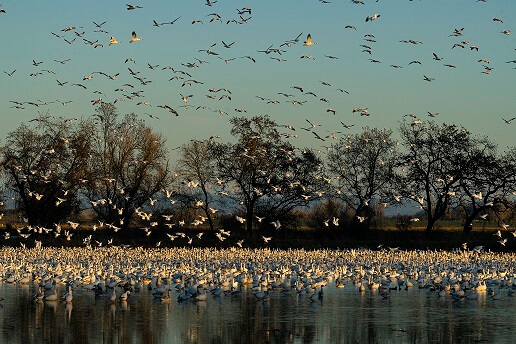By Todd Manley
The Central Valley Joint Venture (CVJV) recently released a video highlighting the scientific work and partnerships that contribute to the recovery of migratory waterfowl, shorebirds and other bird species that utilize the Pacific Flyway. Shot in the Sacramento Valley, the video is packed with incredible visuals of the region’s landscape and the many different birds that travel to the area in the winter months. The video includes interviews with the partners managing land and water resources, implementing habitat projects and conducting scientific studies to maximize habitat for the Flyway species, including NCWA board member Nicole Montna Van Vleck.
Also on display is the important role the varied land uses in the region play in promoting survival of the birds. In addition to the wildlife refuges and managed wetlands, agricultural lands (primarily harvested rice fields) play a substantial role in providing food and habitat for birds traveling along the Flyway into the region.

The CVJV was formally organized in 1988 under the North American Waterfowl Management Plan. Its mission is “to work collaboratively through diverse partnerships to protect, restore, and enhance wetlands and associated habitats for waterfowl, shorebirds, waterbirds, and riparian songbirds, in accordance with the conservation actions identified in the Joint Venture’s Implementation Plan.” The CVJV is guided by a management board, consisting primarily of state and federal agencies and conservation organizations. The CVJV periodically updates the Implementation Plan – most recently in 2020 – which establishes habitat targets and conservation objectives and strategies.
For more information on the partnerships and activities underway in the Sacramento Valley to enhance Pacific Flyway habitat, visit the “Pacific Flyway” section in NCWA’s infographics webpage. A description and map of the varied land resources that make up the Pacific Flyway in the Sacramento Valley is available here. This video is one of several describing the efforts underway in the Sacramento Valley to reactivate the historic floodplain to provide flood protection, create habitat for fish, birds and other wildlife while keeping the lands productive for farming and rural communities.




